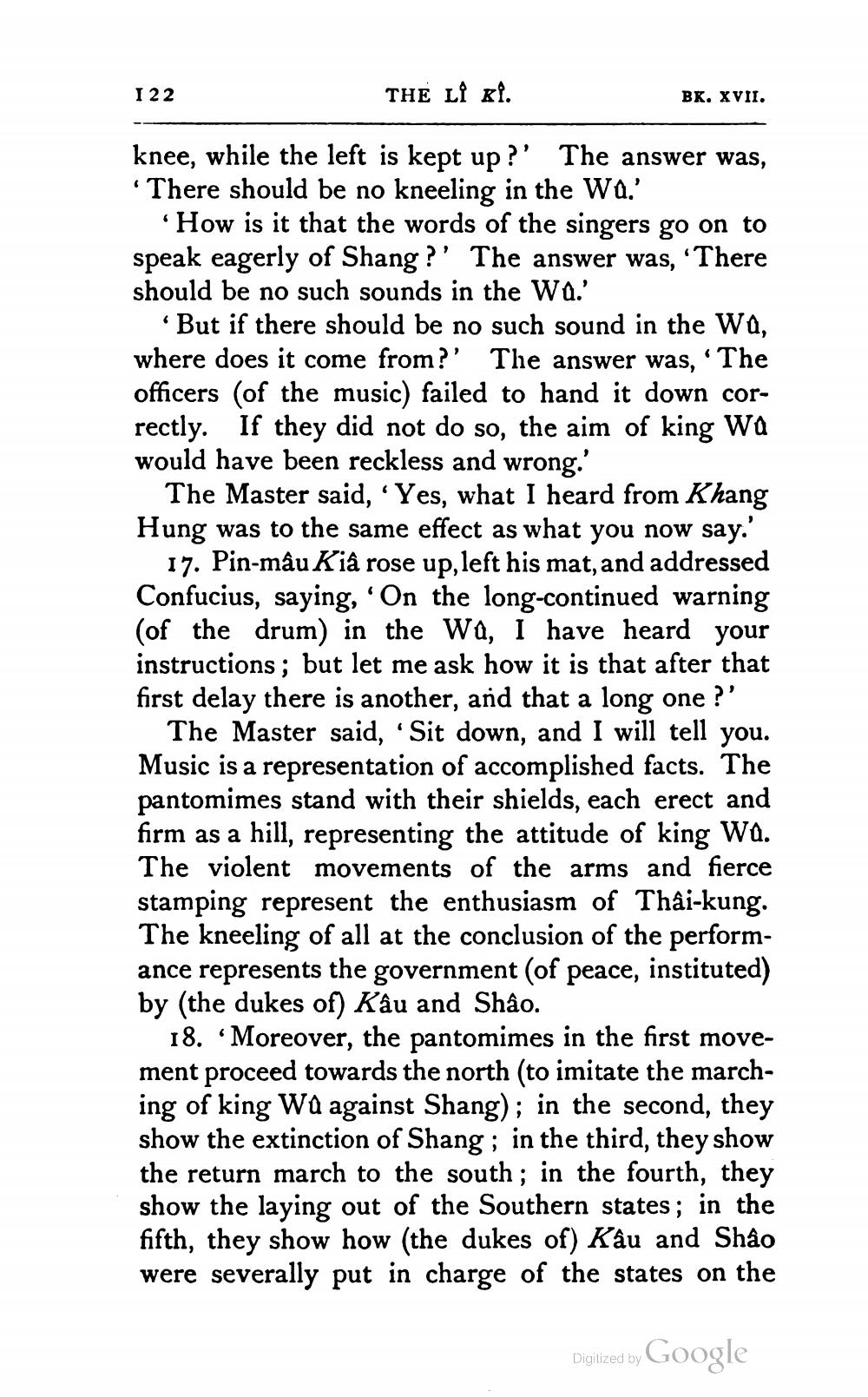________________
I 22
THE LÎ ki.
BK. XVII.
knee, while the left is kept up?' The answer was, "There should be no kneeling in the Wa.'
How is it that the words of the singers go on to speak eagerly of Shang?' The answer was, 'There should be no such sounds in the Wa.'
But if there should be no such sound in the wa, where does it come from?' The answer was, 'The officers (of the music) failed to hand it down correctly. If they did not do so, the aim of king wa would have been reckless and wrong.'
The Master said, 'Yes, what I heard from Khang Hung was to the same effect as what you now say.'
17. Pin-mâu Kiâ rose up, left his mat, and addressed Confucius, saying, 'On the long-continued warning (of the drum) in the Wa, I have heard your instructions; but let me ask how it is that after that first delay there is another, and that a long one?'
The Master said, 'Sit down, and I will tell you. Music is a representation of accomplished facts. The pantomimes stand with their shields, each erect and firm as a hill, representing the attitude of king Wa. The violent movements of the arms and fierce stamping represent the enthusiasm of Thai-kung. The kneeling of all at the conclusion of the performance represents the government (of peace, instituted) by (the dukes of) Kâu and Shâo.
18. Moreover, the pantomimes in the first movement proceed towards the north (to imitate the marching of king Wû against Shang); in the second, they show the extinction of Shang; in the third, they show the return march to the south; in the fourth, they show the laying out of the Southern states; in the fifth, they show how (the dukes of) Kâu and Shâo were severally put in charge of the states on the
Digitized by Google




